A classic British preserve
January can be a tough month in the UK, cold, damp, and dark and with the joys of Christmas seeming a dim and distant memory. Though it does have its occasional high points and one of those is the fleeting appearance in the shops of Seville oranges… which means that it is time to make marmalade.
Seville oranges are a strange fruit, bitter to the point of being thoroughly unpleasant and rammed full of seeds they seem to have little to offer, but cooked with extraordinary amounts of sugar they become the most fantastic complement to a piece of toasted sourdough bread.
I have made marmalade religiously for the last 15 Januarys and it is a fabulously simple process that requires just a couple of ingredients, some equipment, and a little bit of time. In a few hours you can easily make a year’s supply (though I tend to find I give a lot as gifts, almost everyone seems to love a jar of homemade marmalade!)
This recipe typically yields a little under 3kg and you will need six 500g/1lb jars or whatever combination you have to store it in.
You will need…
- 1kg Seville oranges
- 1 lemon
- 2kg granulated sugar
- 1tsp butter (can be omitted, see tips)
Special equipment
- A preserving pan, or a very large pan with a thick base
- A large wooden spoon
- A muslin cloth and cooking string
- Jam jars
- Waxed circles
- A sugar thermometer (optional)
- A jar funnel (optional)
How to make marmalade…
- Wash the oranges and lemon and put a large sieve on top of the preserving pan. Cut the oranges and lemon in half and squeeze the juice into the preserving pan through the sieve to catch any seeds (I use a fork to help get juice out, but a juicer also works well). Pull the flesh out of the squeezed halves so you are left with shells of skin and white pith. Put the flesh into the sieve along with the seeds.
- Finely shred the halves of orange and lemon peel and put the shreds into the pan.
- Tip the contents of the sieve into the centre of the muslin cloth and pull the edges up to form a bag and secure tightly with string. Put the bag into the pan. Cover the shredded peel and bag with cold water, approximately 2.5l.
- Bring the pan to a boil and reduce to a simmer. Cook the peel for approximately two hours, until very soft. Switch off the heat and put the muslin bag in a clean sieve above the pan. Once the bag is cool enough to handle gently squeeze it to extract juice and pectin and add to the pan. Discard the leftover contents of the bag. Give the pan a good stir to distribute everything.
- At this stage you can leave the cooked peel for up to 24 hours at room temperature, or freeze some for later (see tip) or make the marmalade straight away.
- When ready to make the marmalade pop a couple of small plates into the freezer. Wash and thoroughly dry the jars and lids and place them on a baking sheet in the oven and switch on to 120C fan / 130C non-fan. If you are using jars with a rubber seal put the seals in a pan of cold water and bring to a simmer. After 10 minutes switch the heat off and cover the pan till you are ready to use the seals.
- Add the sugar and stir over a medium heat till fully dissolved. Increase the heat and bring the pan up to a rapid boil, stirring occasionally (be careful, it can be quite volcanic). Boil for 10 minutes.
- After 10 minutes switch the heat off and check how set the marmalade is by dropping a teaspoon on one of the plates, let it cool for a few moments and then gently push it with your fingernail. It is set once a skin forms on the top which forms ridges when pushed. You can also use the sugar thermometer to check if it has reached 105C (jam setting). The peel will also become translucent when fully cooked.
- If it is not set, boil for a further 5 minutes and test again. Continue boiling at 5 minute intervals and test – it may take a little while.
- Once a set has been achieved switch off the heat and leave to cool for 10 minutes. Stir in the butter (optional) to disperse any foam on the top and put the marmalade into the warm jam jars with a ladle and jar funnel. Leave to stand for 10 minutes in the jars and give the marmalade a final stir with a spoon to distribute the peel, add a wax disk to the top and add the lids – twist to seal.
- Let the jars fully cool, give them a final wipe, label them and enjoy.
- Can be stored for 12 months away from direct sunlight.
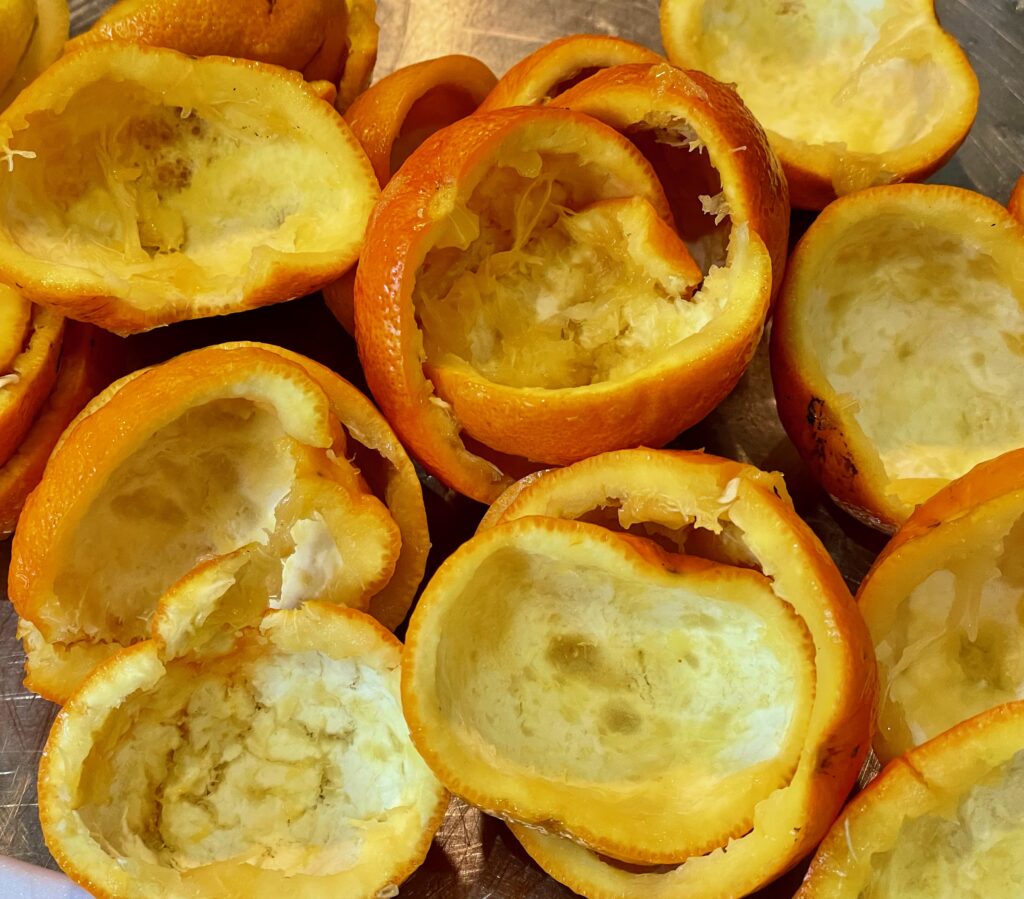
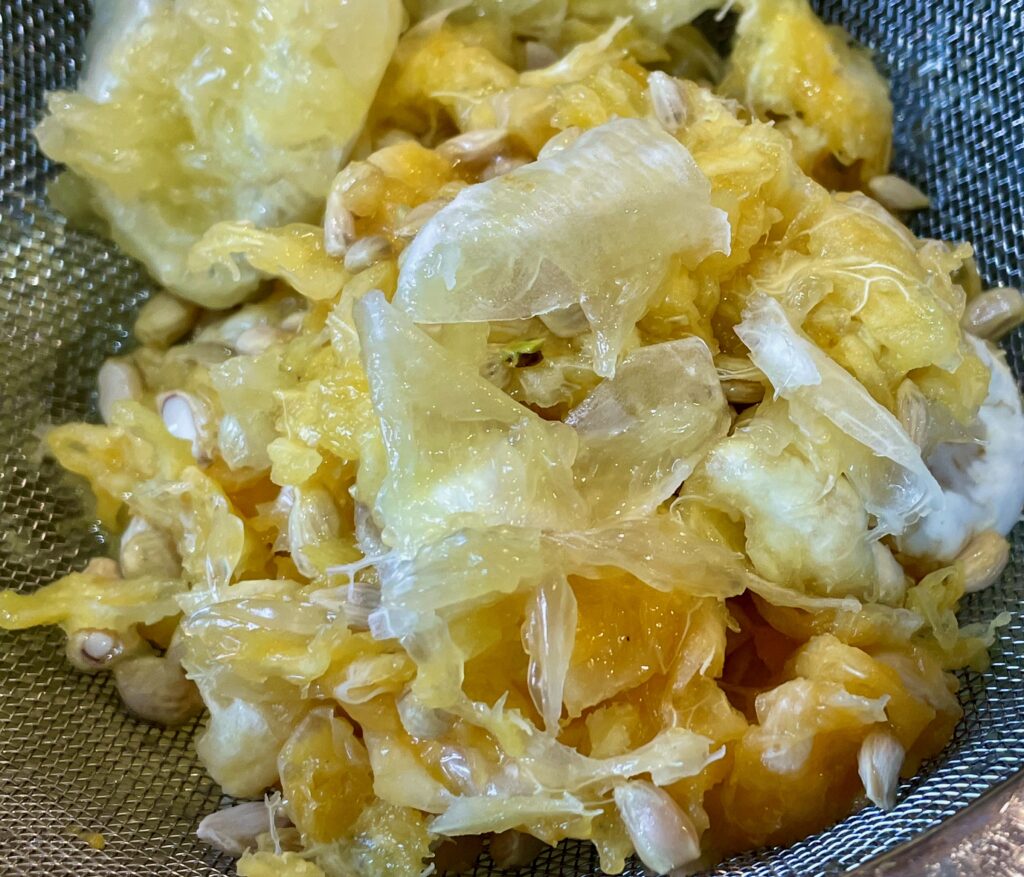
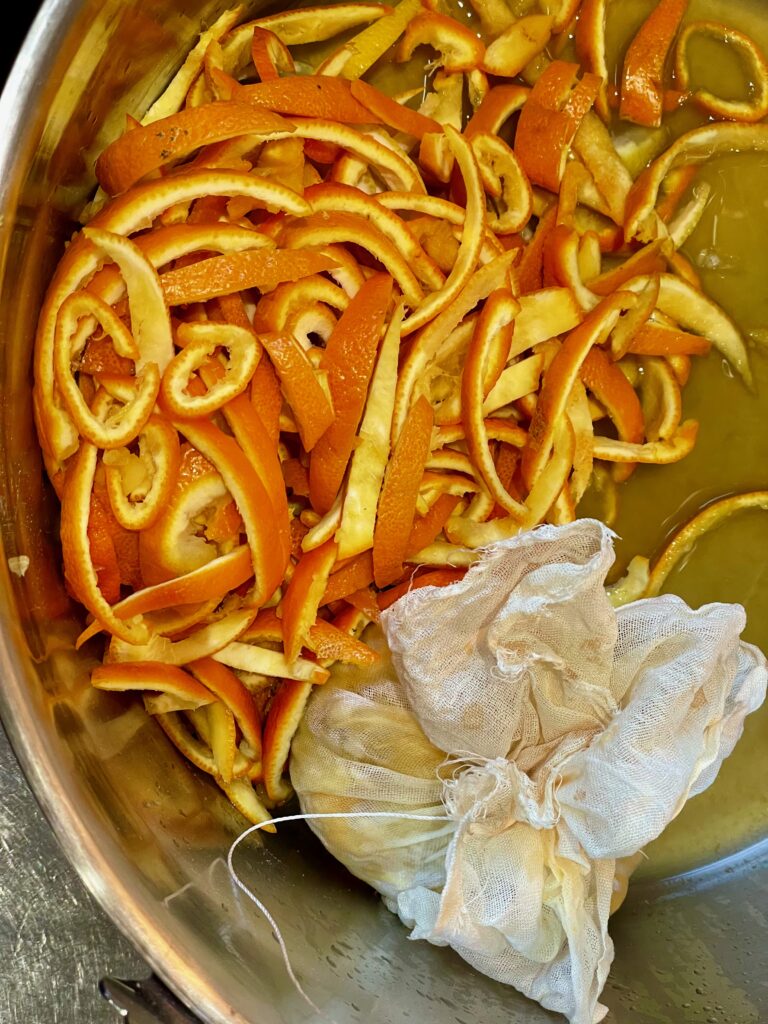
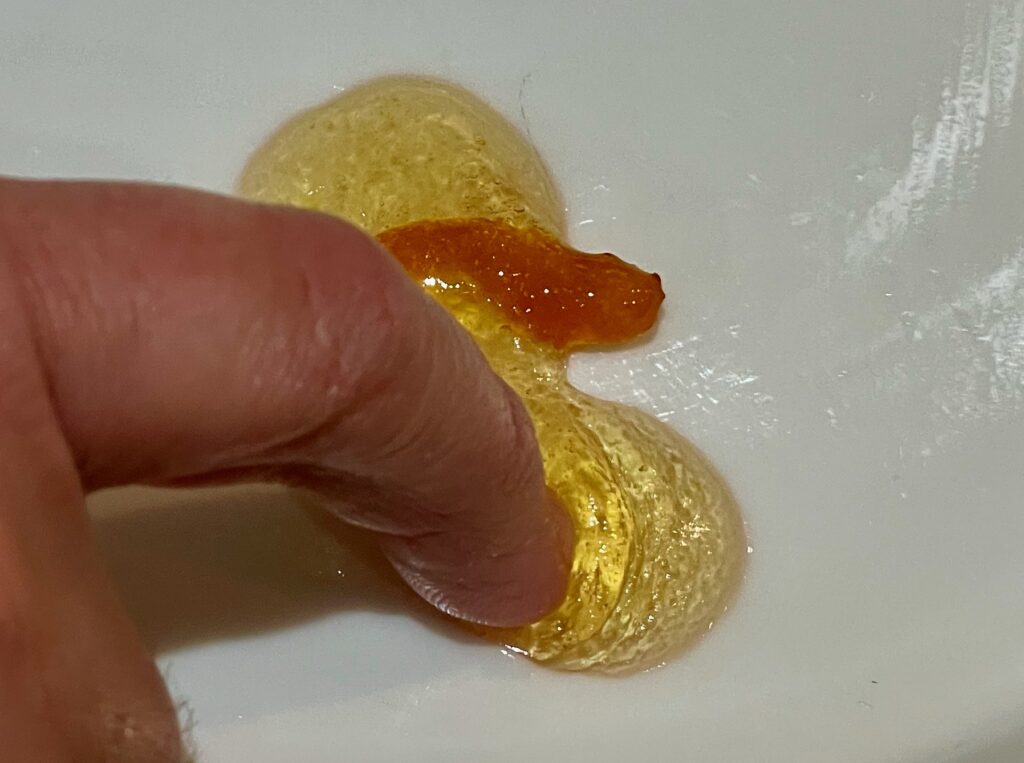
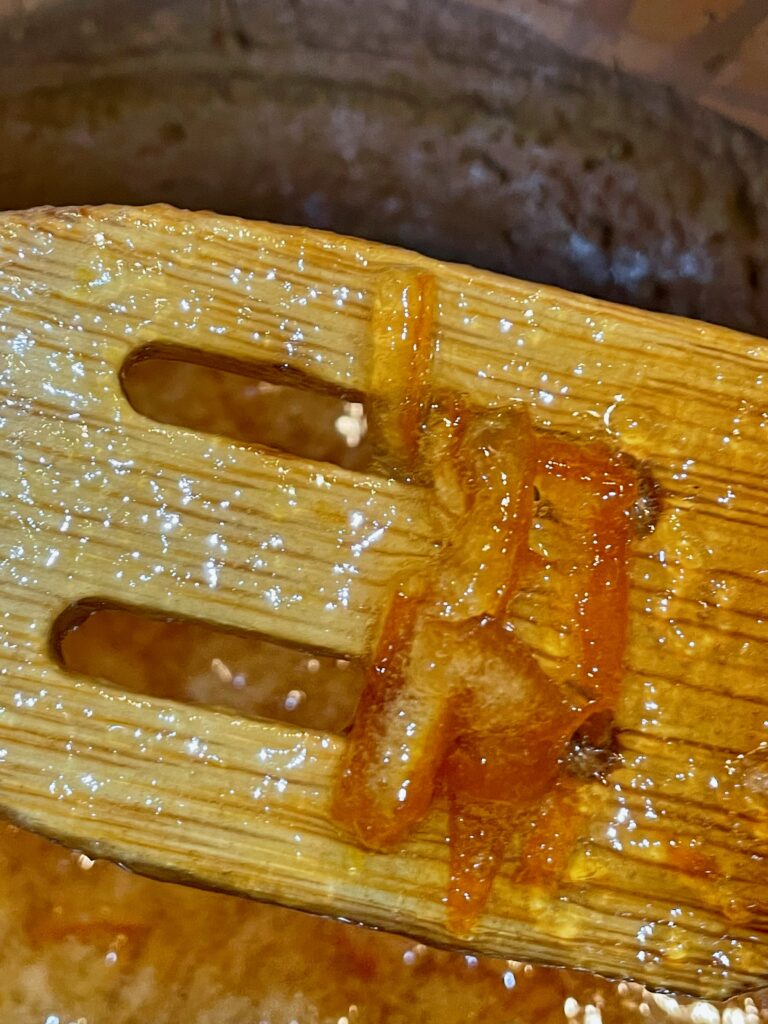
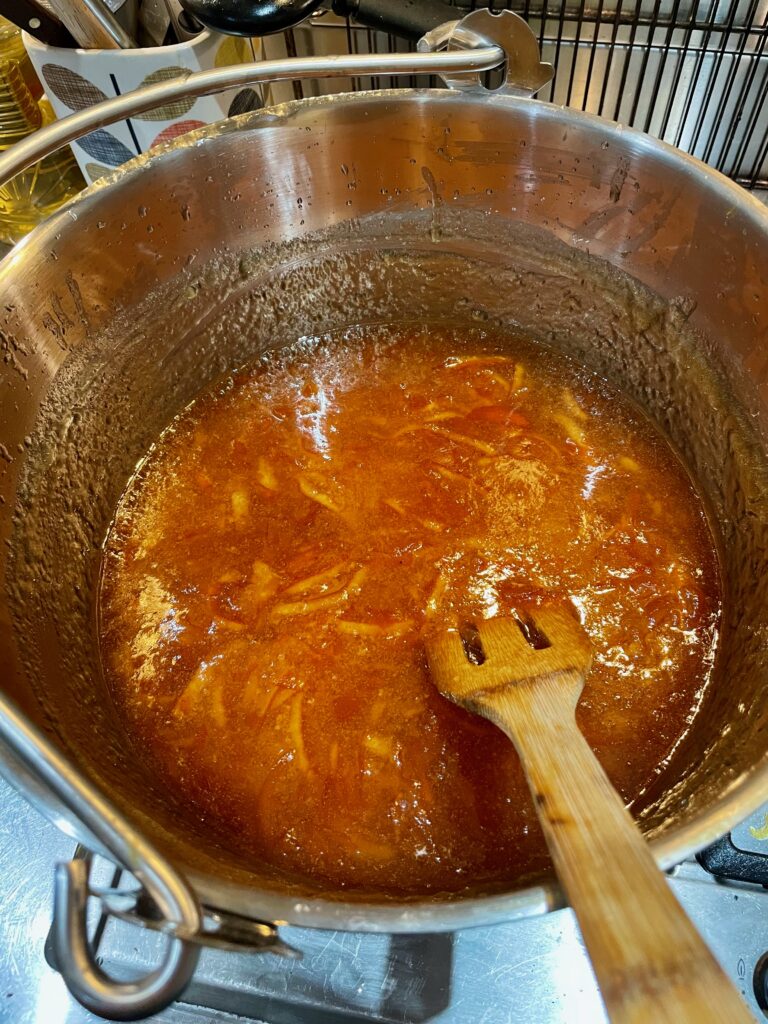
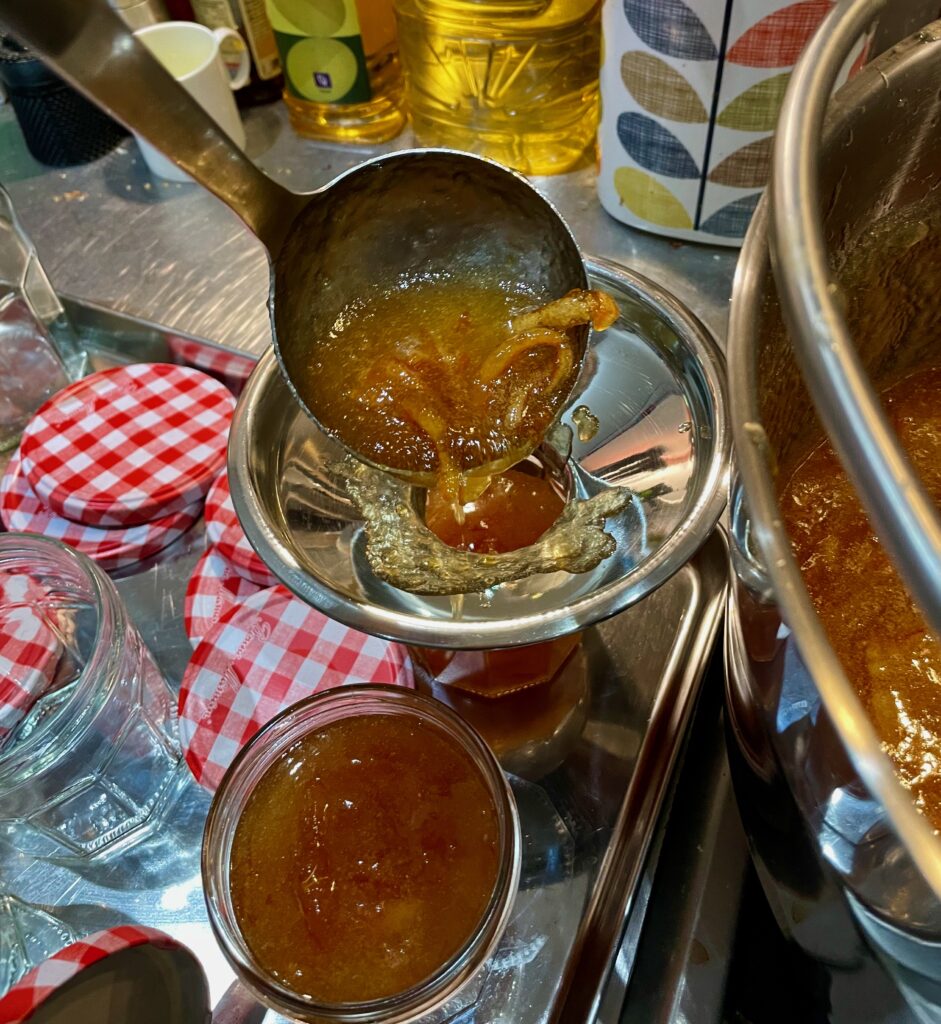
Tips
- I use granulated sugar which is cheap and widely available. You can also use preserving sugar, which has larger crystals that dissolve evenly. Do not use caster sugar, which is too fine and liable to clump or jam sugar, which contains added pectin (there is enough pectin in the oranges and lemon to set the marmalade).
- The teaspoon of butter helps clarify the finished marmalade; however, it can be omitted for a vegan marmalade, in which case remove any ‘scum’ from the top with a spoon before putting in the jars.
- My recipe can be scaled up and down, though turning more than 1.5kg of oranges into marmalade in one go is more than a typical preserving pan can handle…
- …However, you can cut and cook 2kgs of oranges and then split them into two equal batches, cool and freeze one batch and turn into marmalade when your first batch has run out.